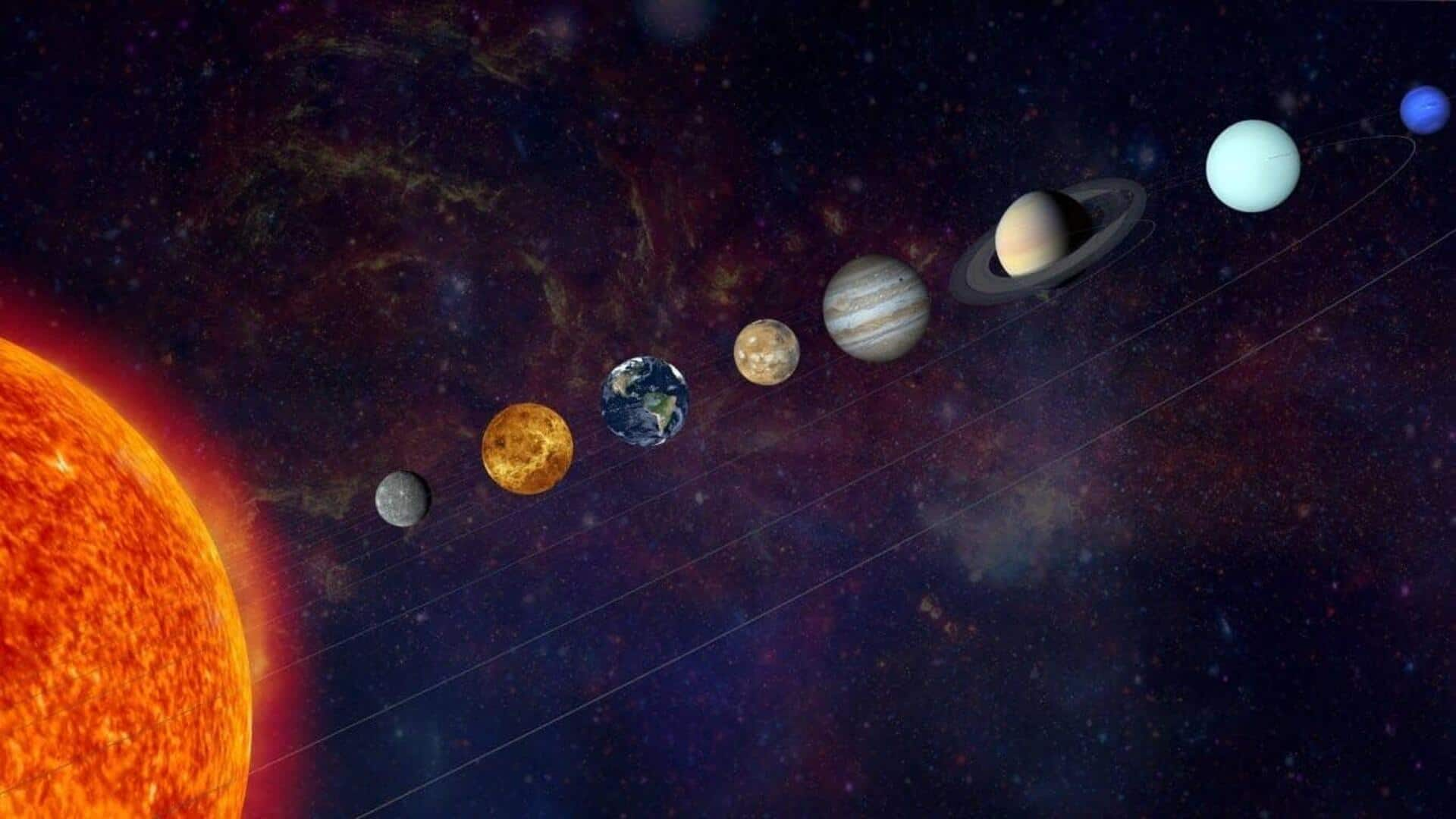
Six planets set for rare alignment tonight: How to watch
What's the story
A rare celestial event, a planetary alignment or "planetary parade," will occur tonight. The phenomenon happens when multiple planets appear closely together on one side of the Sun. According to Starwalk.space, the upcoming alignment will include Mars, Jupiter, Uranus, Neptune, Venus and Saturn. Out of these six planets, Mars, Jupiter, Venus and Saturn, will be visible without telescopic equipment.
Celestial mechanics
Understanding the mechanics of planetary alignment
Planetary alignment occurs because all planets orbit the Sun along the same orbital plane, called the ecliptic on Earth. Each planet travels at its own pace and eventually aligns with others over time. From our perspective on Earth, this alignment looks like a line, although it's not perfectly straight due to each planet's distance from the Sun and their respective speeds.
Observation guide
Viewing tips for the upcoming planetary alignment
To spot Neptune and Uranus during the alignment, you'll need high-powered binoculars or a telescope. We recommend picking a viewing spot free of obstructions such as tall buildings or mountains for a clear view of the sky. The exact timing and visibility of the alignment will vary depending on your location. However, in most regions, the planets will be best seen during the pre-dawn hours, just before sunrise. Look for a line of bright objects stretching across the eastern horizon.
Future events
More planetary alignments expected in 2025
If you're unfamiliar with celestial navigation, consider using a stargazing app to locate the planets in the sky. These apps can provide real-time sky maps and point you in the right direction. The year 2025 will also see other occurrences of multiple planets aligning. These include February 28 when seven planets will align in the evening, April 15 with four planets aligning in the morning, and August 11 when six planets will align again during morning hours.